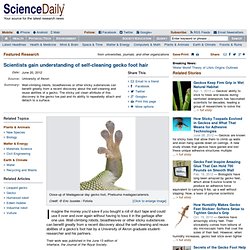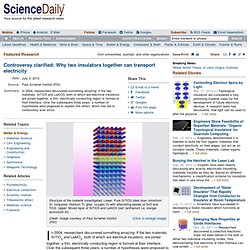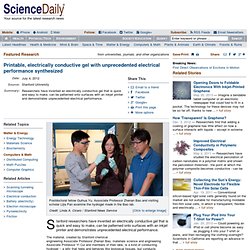

Björk: 6 talks that are music to my ears. Scientists gain understanding of self-cleaning gecko foot hair. Imagine the money you'd save if you bought a roll of duct tape and could use it over and over again without having to toss it in the garbage after one use.

Wall-climbing robots, bioadhesives or other sticky substances can benefit greatly from a recent discovery about the self-cleaning and reuse abilities of a gecko's foot hair by a University of Akron graduate student-researcher and his partners. Their work was published in the June 13 edition of Interface, the Journal of the Royal Society. The sticky yet clean attribute of this discovery is the gecko toe pad and its ability to repeatedly attach and detach to a surface. Researchers Shihao Hu, a UA mechanical engineering student, and biologist and recent UA graduate Stephanie Lopez-Chueng of Keiser University in Fort Lauderdale, Fla., and their team discovered that the clue to a dynamic self-cleaning mechanism in gecko setae, or microscopic foot hair, is achieved through the hyperextension of their toes.
Controversy clarified: Why two insulators together can transport electricity. In 2004, researchers discovered something amazing: If the two materials, SrTiO3 and LaAlO3, both of which are electrical insulators, are joined together, a thin, electrically conducting region is formed at their interface.

Over the subsequent three years, a number of hypotheses were proposed to explain this effect, which has led to controversy ever since. "There are conference sessions at which the majority of contributions are about this effect," says Mathilde Reinle-Schmitt, a researcher at PSI and the first author of the work presented here. Of the various explanations forwarded, effectively only two competing hypotheses have survived. In order to compare their relative merits, an appropriate experiment was performed by scientists at PSI, together with colleagues from the University of Geneva.
In addition, scientists from the University of Liège have contributed important theoretical insights. Printable, electrically conductive gel with unprecedented electrical performance synthesized. Stanford researchers have invented an electrically conductive gel that is quick and easy to make, can be patterned onto surfaces with an inkjet printer and demonstrates unprecedented electrical performance.

The material, created by Stanford chemical engineering Associate Professor Zhenan Bao, materials science and engineering Associate Professor Yi Cui and members of their labs, is a kind of conducting hydrogel -- a jelly that feels and behaves like biological tissues, but conducts electricity like a metal or semiconductor. That combination of characteristics holds enormous promise for biological sensors and futuristic energy storage devices, but has proven difficult to manufacture until now.